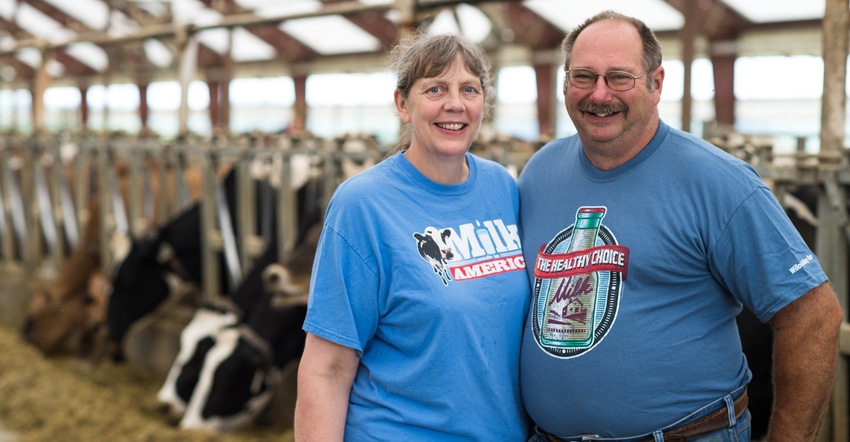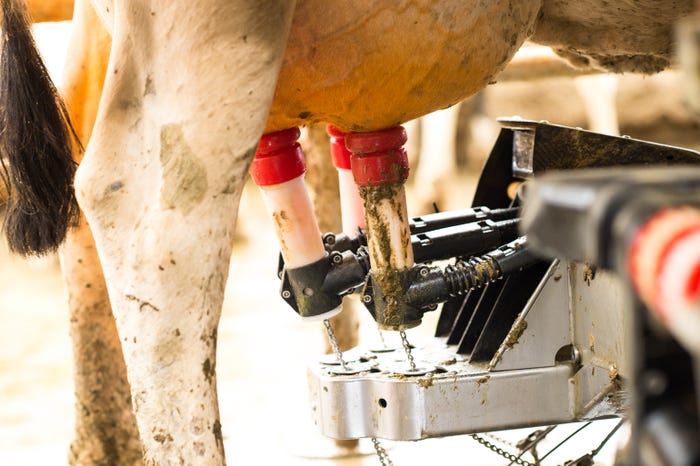August 22, 2018

By Christy Couch Lee
When John Lawfer studied at the University of Wisconsin-Platteville, he brought home a big lesson: how robotics create big advantages in dairy herds. It didn’t take long to convince his parents, Ron and Julie, that robotic milkers could help their Kent, Ill., dairy.
“We have made a major investment — a 30-year commitment,” says Ron Lawfer. “We went from 140 cows and a double-12 swing parlor to three robotic milkers. But this investment was the best thing we did. If we were doing things as we used to, we wouldn’t be in business now. The robots have increased our efficiency tremendously.”
Lawfer says efficiency is going to be key as Illinois dairy producers move forward.
“The larger farms are efficient, and that’s why they are where they are,” he says. “I don’t want to see smaller farms go. But in order to compete, we have to be efficient. The choice to incorporate robots has allowed us to keep going.”
 EFFICIENT: Ron Lawfer says investing in robotic milkers is the best thing they’ve done. “If we were doing things as we used to, we wouldn’t be in business now. The robots have increased our efficiency tremendously.”
EFFICIENT: Ron Lawfer says investing in robotic milkers is the best thing they’ve done. “If we were doing things as we used to, we wouldn’t be in business now. The robots have increased our efficiency tremendously.”

In addition, Lawfer says, digging in and doing whatever it takes will lead to the survival of the fittest.
“Concentrate on what you have control over,” he says. “There are many things we don’t have control over, and one is the price of milk right now. But we do have control over the quality of our milk, the quality of our feed and our expenses. Focus on that.”
Survival 101
Tasha Bunting, Illinois Milk Producers’ Association, says dairy production facilities nationwide, including Illinois-based Prairie Farms, continue to research and develop new products to increase customer demand.
“These companies are focusing their efforts on new markets to absorb some of the overproduction,” she says. “As a company, Prairie Farms is doing just fine. Every business is dealing with oversupply right now and is looking at what is best, and making production cuts, if necessary, without displacing farmers, if possible.”
And, as of late August, no dairy farmers have been dropped by Prairie Farms in this downturn of the industry, Bunting says.
Attitude will be everything as producers navigate this time.
“Some economists are hoping we have already reached the low point, and we will gradually begin coming back up,” she says. “It will be a while, but we will come back up.
“Farmers are eternal optimists,” she continues. “And if we can get the markets opened back up and continue to get products back up, we will definitely see a brighter path for farmers and the dairy industry.”
What's the #10GallonChallenge?
Ty Higgins, an Ohio farm broadcaster, has developed a social media initiative to help the dairy industry and families in need: the #10GallonChallenge. The concept? Purchase 10 gallons of milk and donate them to a local food pantry. It’s a win-win for both the dairy industry and struggling families.
Lee writes from Wellington, Ill. For more on the dairy industry struggle in Illinois, see Perfect storm rocks Illinois dairy industry.
You May Also Like




